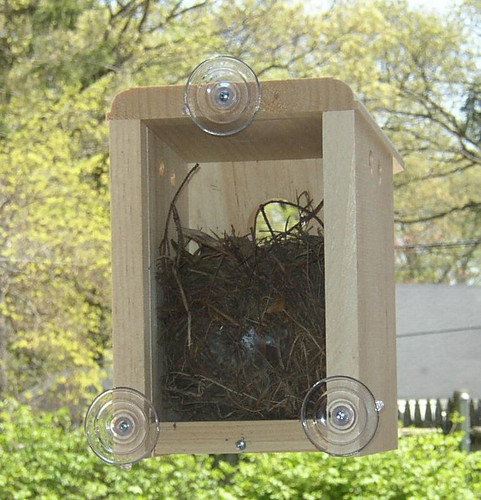Backyard habitat is beneficial to you and the wildlife around you. You can help animals in your area with various projects that are a great way to connect with your family. For example, you can build bird houses, bad houses, butterfly homes, and bee houses. If you have the space and are allowed to have a chicken coop in your neighborhood, you can enjoy fresh eggs.
Inviting habitats into your backyard is aiding in the environment and has benefits as well. Birds and bats get rid of pesky insects while bees pollinate your garden so your flowers flourish. It’s also exciting to have these guests in your backyard with the knowledge that you’re contributing to local wildlife conservation.
Understanding backyard wildlife habitat
Your backyard wildlife habitat will require you to mimic natural habitat as best as you can. This means using natural materials when adding a house or feeder, otherwise, it’s possible wildlife will reject it. Remember, the houses you offer will provide homes for species that could be at risk and need help, like bees. In return, these pollinators will increase and benefit your garden, creating a reciprocal advantage. Wildlife like bats can be your natural pest control during sleeping hours.
You can choose to add native plants to your yard, which will attract birds, wildlife, bees, and butterflies. Butterflies and bees are attracted to bright flowers while certain birds are attracted to specific trees.
Choosing what habitats to include
To help you decide what habitats you want to invite into your yard, consider what species need the most help in your area. This is going to vary dramatically depending on where you live, but it shouldn’t be difficult to find this information. It’s likely that your local gardening expert will know or you can search local resources. Bees need help in every region, but of course, if someone in your home has an allergy to bees, it’s best to steer clear of having a bee house and flowers that they’re attracted to.
Figure out what kind of habitat you want to attract for viewing. Kids are often excited to see bats flying around the backyard once the sun sets. If you have the right flowers, you can have butterflies fluttering through your garden daily.
Chicken coop basics
A chicken coop in the backyard is a fun project for the whole family. Once you’ve decided what kind of breed you want and how many chickens you’re going to house, you’ll want to offer them the best quality of life. The happier your chickens are, the more eggs they’ll yield.
Choose a chicken coop based on the needs of your chickens and to help reduce your workload. Common materials for a chicken coop include wood, metal, and recycled plastic/composite. Here are some considerations when it comes to buying a chicken coop:
Size: Standard chicken breeds require two square feet per bird and ten square feet in the run. Chickens like to spend time outside exploring and then returning to the coop to feed, lay eggs, and roost. Although chickens don’t require high ceilings, you may want the standing room when you clean the coop.
Durability: For a long-lasting coop, durability is key. Metal coops are the most durable against stormy weather and when properly maintained, you can prevent rusting from damp weather. Wood is highly durable when maintained and withstands all types of weather. Recycled plastic is durable in wet climates but not as long lasting when it’s exposed to direct sunlight constantly.
Accessibility: Build a chicken coop that’s easy for you to get into for feeding, cleaning, and collecting eggs. Consider full-height ceiling or design with outdoor access so you don’t have to cower down to go into the coop.
Location: If you live in a hot climate, put your coop in a space that has plenty of shade. If you live in an area with mild winters where it rains a lot, put your coop beneath a cover that protects chickens from heavy rain. Chickens do benefit from sun exposure so allow for a mix of sun and shade.
Venting and air flow: Vents increase air circulation while offering a healthy breathing space free from disease. Vents should be near the top of the structure for warm air to escape. Smaller coops don’t usually require fans as natural air circulation is effective, as long as you have a vent. Place metal screening or mesh over vents to prevent predators from getting in.
Added components:
Roosts should be up high as this is what chickens prefer to keep them safe while they’re sleeping. For every 4 to 5 hens, there should be one nesting box that should measure approximately 12 to 15 inches in height and width, and about 12 inches deep. Nesting boxes should be away from roosting perches. Mood lighting during the dark days of winter extends the laying season. Through the cold months, stabilize your coop temperature so it’s no colder than -15ºC (5ºF) to -20ºC (-4ºF) consistently.






